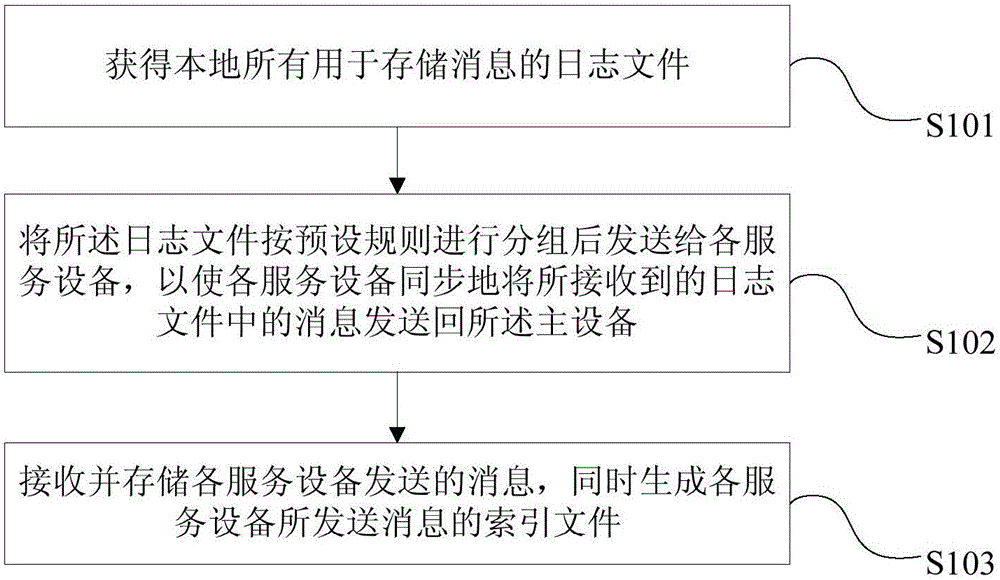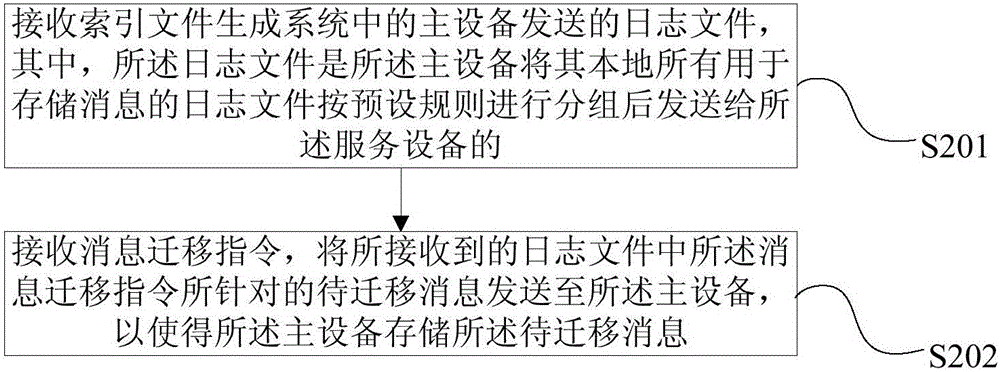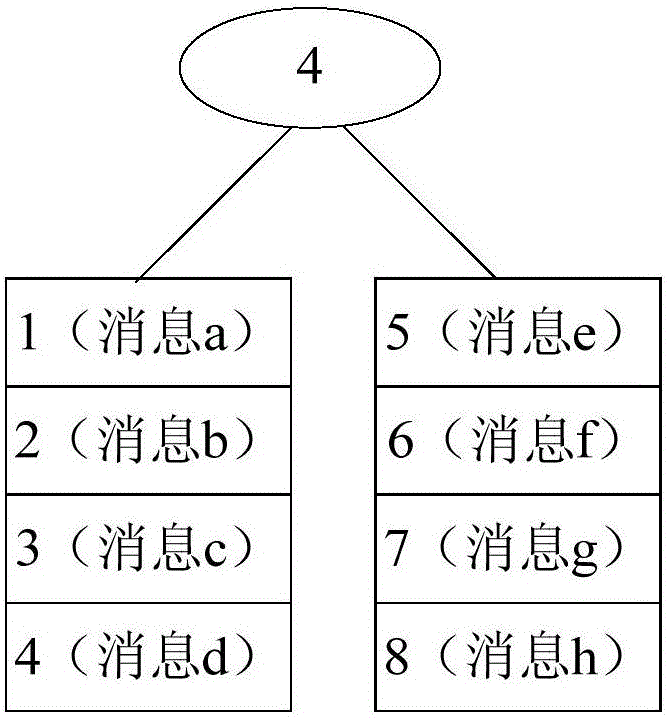Index file generation method, apparatus and system
A technology for indexing files and generating systems, which is applied in the field of information retrieval, can solve problems such as slowness and longness, time-consuming, and affect message sending and receiving, and achieve the effects of accelerating generation speed, shortening the time used, and ensuring real-time performance
- Summary
- Abstract
- Description
- Claims
- Application Information
AI Technical Summary
Problems solved by technology
Method used
Image
Examples
Embodiment Construction
[0061] The following will clearly and completely describe the technical solutions in the embodiments of the present invention with reference to the accompanying drawings in the embodiments of the present invention. Obviously, the described embodiments are only some, not all, embodiments of the present invention. Based on the embodiments of the present invention, all other embodiments obtained by persons of ordinary skill in the art without making creative efforts belong to the protection scope of the present invention.
[0062] Embodiments of the present invention provide a method, device, and system for generating an index file. The method for generating an index file provided by the embodiment of the present invention will first be described in detail below.
[0063] In a first aspect, the method for generating an index file provided by an embodiment of the present invention is applied to a main device in an index file generating system, and the index file generating system f...
PUM
 Login to View More
Login to View More Abstract
Description
Claims
Application Information
 Login to View More
Login to View More - R&D
- Intellectual Property
- Life Sciences
- Materials
- Tech Scout
- Unparalleled Data Quality
- Higher Quality Content
- 60% Fewer Hallucinations
Browse by: Latest US Patents, China's latest patents, Technical Efficacy Thesaurus, Application Domain, Technology Topic, Popular Technical Reports.
© 2025 PatSnap. All rights reserved.Legal|Privacy policy|Modern Slavery Act Transparency Statement|Sitemap|About US| Contact US: help@patsnap.com



